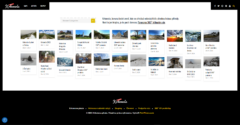Features section
Add advertising hereMaximizing Visibility: A Step-by-Step Guide to Submitting Your Website to Google Search Engine
In today’s digital age, having a robust online presence is crucial for the success of any business or personal brand. Search engines, especially Google, play a significant role in determining how visible your website is to potential visitors or customers. To maximize your visibility, it’s essential to ensure that your website is properly indexed by Google. This article aims to provide you with a step-by-step guide on how to submit your website to the Google search engine, followed by a look at the benefits of using WebsiteURL.org as part of your broader SEO strategy.
Step 1: Check if Your Website is Already Indexed
Before you consider submitting your website, it’s vital to check whether Google has already indexed it. You can do this by typing "site:yourwebsite.com" into Google’s search bar. If you see your website’s pages listed, then your site is indexed. If not, or if you want to improve your website’s current visibility, continue with the following steps.
Step 2: Create a Sitemap
A sitemap is essentially a roadmap of your website that leads Google to all your important pages. Google can crawl your website without a sitemap, but having one ensures that the search engine knows about all the pages on your site, including any URLs that might not be discovered during the regular crawling process. Tools like XML Sitemaps Generator can help you create this crucial file.
Step 3: Sign Up for Google Search Console
Google Search Console (GSC) is a free tool offered by Google that helps you manage your site’s presence in Google search results. To add your website, head over to GSC, sign in with your Google account, and click on ‘Add a Property’. Follow the instructions to verify your website. This step often involves adding a code snippet to your site or verifying ownership through your domain registrar.
Step 4: Submit Your Sitemap to Google
Once you have verified your website in Google Search Console, you can submit your sitemap directly to Google. In the GSC dashboard, find the ‘Sitemaps’ section under the ‘Index’ menu. Enter the URL of your sitemap and click ‘Submit’. This prompts Google to crawl your website more efficiently.
Step 5: Regularly Monitor Your Website’s Health and Indexing Status
After submitting your sitemap, it’s important to regularly monitor your website’s performance and indexing status through Google Search Console. GSC provides valuable insights into how Google views your website, highlighting areas for improvement such as mobile usability and search-related issues.
Featured section
Add advertising hereBenefits of Using WebsiteURL.org
While the above steps will help you get your site indexed and potentially improve its visibility in Google searches, incorporating services like WebsiteURL.org into your SEO strategy can offer additional advantages:
- Enhanced Visibility: WebsiteURL.org can help increase your online presence by including your URL in its listings, leading to better visibility and potentially more organic traffic.
- Backlink Generation: Being listed on WebsiteURL.org provides valuable backlinks to your website, which are crucial for SEO. Google considers backlinks as an indicator of your website’s credibility and relevance.
- Ease of Use: Submitting your website to WebsiteURL.org is straightforward, making it an accessible option for enhancing your site’s SEO without requiring extensive technical knowledge.
- Diverse Audience Reach: WebsiteURL.org attracts users from various sectors looking for different resources, which means your website can be discovered by a wide range of audiences.
- Cost-Effective: For new or small businesses, finding cost-effective ways to improve your SEO is crucial. WebsiteURL.org offers a platform to amplify your online presence without breaking the bank.
By following this step-by-step guide and leveraging platforms like WebsiteURL.org, you can significantly increase your website’s visibility on Google. This not only improves your site’s potential to draw in more traffic but also enhances your overall online presence in today’s competitive digital landscape.





